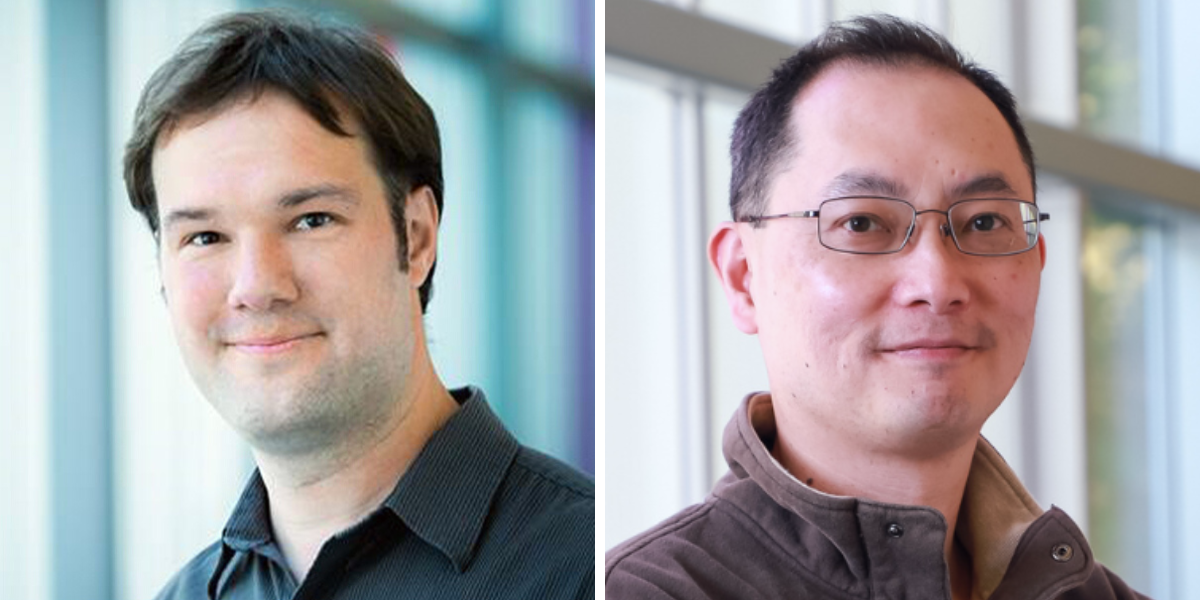Generously supported by funding from BC Children’s Hospital Foundation and the Michael Cuccione Foundation, researchers at BC Children’s Hospital have developed a new precision oncology platform that stands to save young lives across Canada.
The Better Responses through Avatars and Evidence (BRAvE) Initiative at BC Children’s Hospital is using cutting-edge research to revolutionize precision treatments for children with cancer. The BRAvE team seeks to increase the number of children who can benefit from treatments targeted at attributes of individual tumours, battle hard-to-treat cancers, and reduce long-term health impacts. We recently sat down with Dr. Philipp Lange and Dr. James Lim to learn more about BRAvE and the team’s recent innovations.

How is BRAvE leading the new paradigm of childhood cancer care in Canada?
JL: For decades, treating pediatric cancer has basically been a one-size-fits-all approach. In other words, the treatment one child receives for a particular cancer is generally the same that all patients with the same cancer receive. With this type of approach, while it’s the best we’ve had, no one can be certain whether the treatment will work or how each patient will respond to the procedures and medications they receive.
Precision oncology — informed by the genetic profile of the patient’s tumour — has had some success with adult cancer patients, but there are unique challenges when treating our youngest patients. Different tissues are affected in childhood cancer and fewer cancer drugs are considered safe for children.
PL: The BRAvE Initiative was established by Dr. Christopher Maxwell, Dr. Gregor Reid, Dr. James Lim, and myself — and was made possible through the generous support from donors across B.C. BRAvE is leading the way toward a new precision medicine approach that begins the moment the child enters the hospital. Right from the child’s initial diagnosis, we’ll work to develop a personal treatment “recipe” based on the unique qualities and molecular makeup of their cancer cells.
JL: We will begin by zooming in on the genomic playbook and molecular machinery, or proteome, of the child’s tumour. To do this, we use cutting-edge genome sequencing and mass spectrometry technology to find the individual weaknesses or vulnerabilities of the tumour cells.
We then grow an avatar model of the child’s tumour in the laboratory which allows us to understand how the tumour might grow and respond to drugs that precisely target its identified weaknesses. These combined efforts allow us to prepare the best way to combat the child’s cancer should it return or prove difficult to treat with conventional therapies.

Why is planning for pediatric cancer recurrence so important?
PL: When a child experiences a return of their cancer, they’re much less likely to survive. In fact, more than 700 Canadians from birth to age 29 die from difficult-to-treat, relapsed, or metastatic cancer each year.
Our goal is to be ready with the most effective treatment possible for each patient — one that we have already thoroughly tested on their specific tumour cells. We may not need to use the treatment, but we’ll have it ready just in case. We believe that having a clear treatment strategy in place will increase the likelihood of positive treatment outcomes and have the added benefit of reducing patients’ and families’ fear of relapse.
JL: The cancer cells in a patient whose disease has relapsed are usually the most resistant to standard cancer treatments, making it even more important to have the targeted therapies ready well before cancer recurrence happens. And, since pediatric cancers tend to be very aggressive and access to innovative treatments is challenging and slow, it’s important to have these targeted treatments identified and tested as quickly as possible.
What is the next step for the BRAvE Initiative?
PL: Cancer affects children across Canada and the world. After building a strong platform in B.C., we will continue to provide leadership to national initiatives like PROFYLE and work with international partners to make precision oncology universally accessible. We are also focused on approaches to more quickly generate tumour avatars for solid pediatric tumours.
JL: Here at BRAvE, we now have a first-in-Canada facility to grow patient tumours as chicken egg-based avatars. This exceedingly agile system is a very powerful tool for testing cancer drugs and can be completed within four weeks from the time the biopsy was taken — compared to the three to six months it takes in mouse-based avatars.
This chicken egg avatar technology dramatically shortens the preparation time and may open the door to a future where every difficult-to-treat cancer can be enrolled in innovative targeted therapies.
PL: In closing, we want to say a big thank you to the donors who made the research behind the BRAvE Initiative possible. Your generosity is saving lives and making newer, better, and safer childhood cancer treatments possible.
JL: Also, thank you to our partners across Canada who have worked tirelessly to advance new technologies in pediatric precision medicine. The collaboration we’ve seen is truly inspiring and we look forward to what the future holds in treating pediatric cancers.
To learn more about BRAvE at BC Children’s, check out The BRAvE Initiative.




